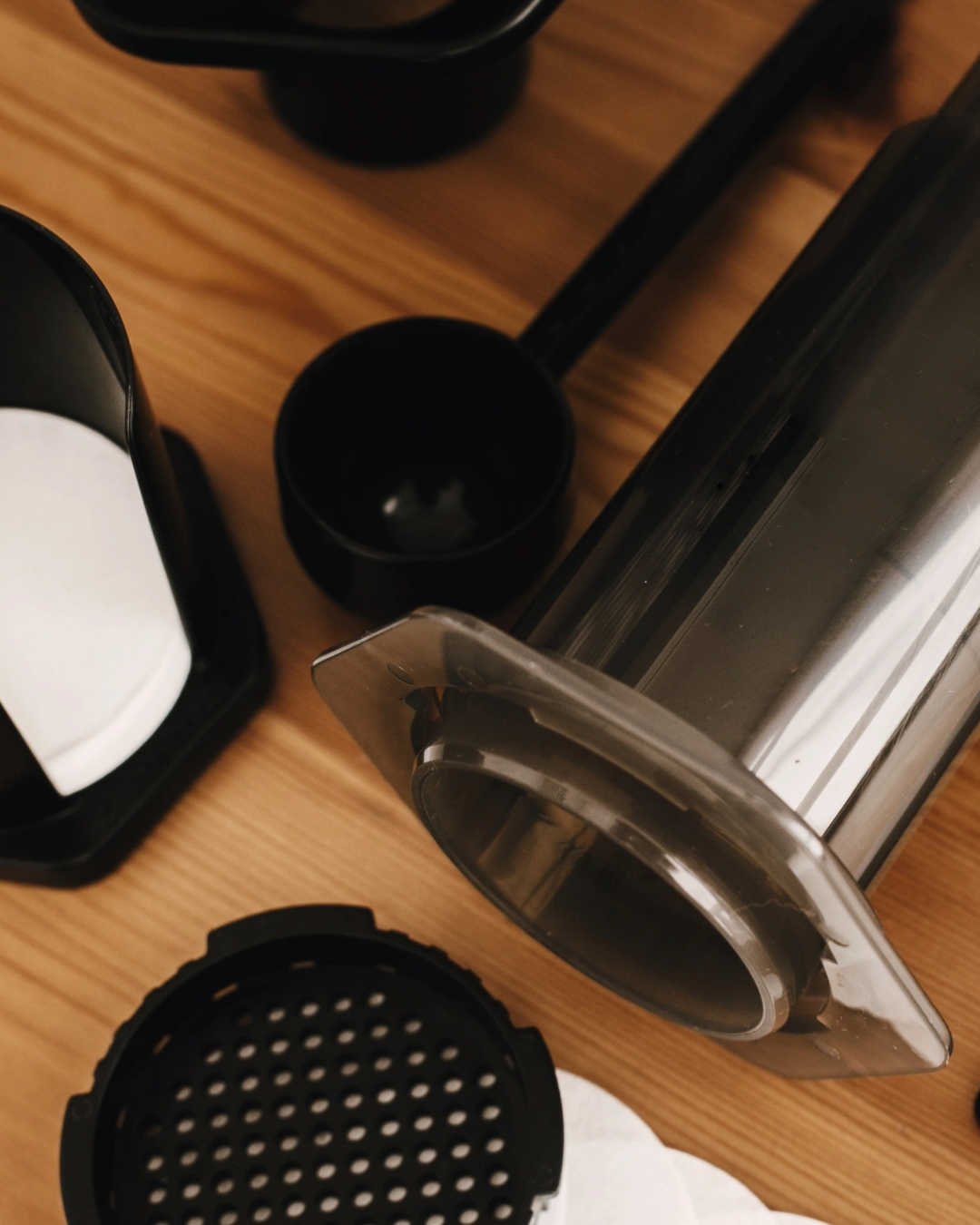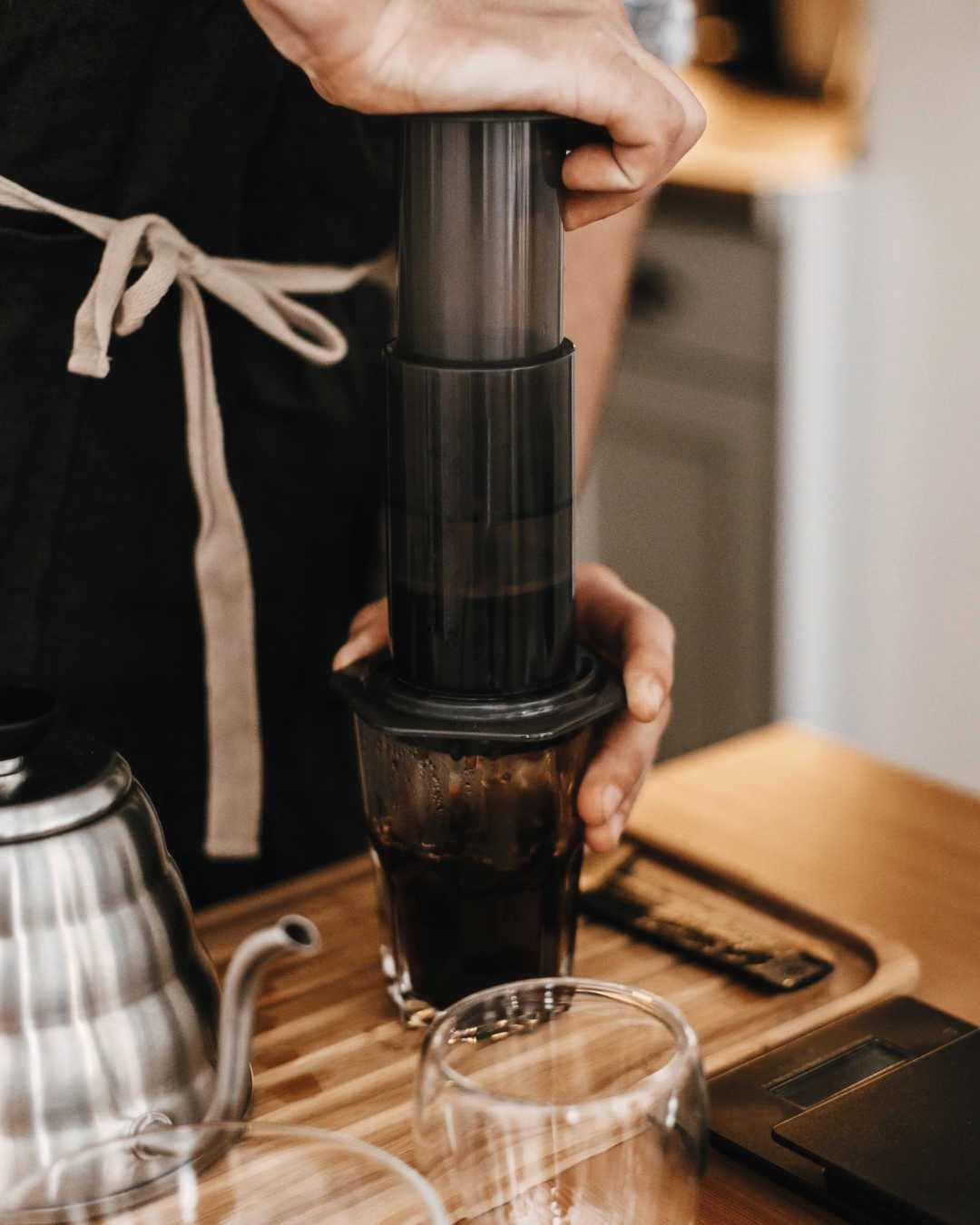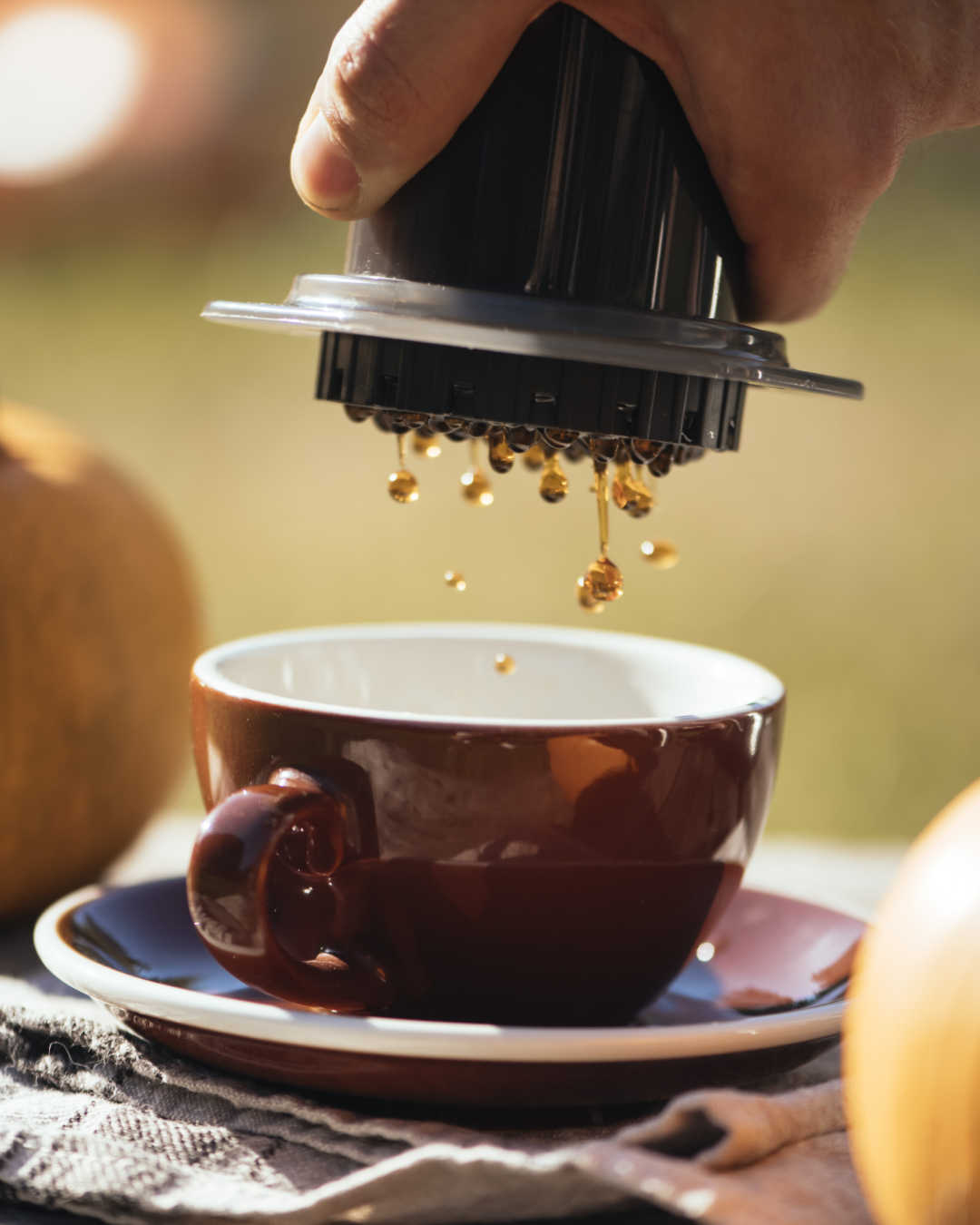
In a world of over-engineered coffee gadgets demanding barista-level skills, one device stands apart: AeroPress, a plastic syringe that looks like it belongs in a science kit. At first glance, it appears simple, almost toy-like. Yet, the AeroPress has achieved a cult status that rivals devices ten times its price.
[Ed. Note: Geni.us links may be affiliate.]
Despite its humble plastic construction, the AeroPress is celebrated for being fast, durable, and portable. But its unassuming appearance hides a few surprising secrets—counter-intuitive truths that, once you understand them, completely unlock its potential. These aren’t complicated hacks, but fundamental aspects of its brilliant, intentional design that many new users miss.
After years of sifting through user reviews, expert advice, and community forums, I’ve distilled the noise into five of the most impactful revelations about this beloved plastic plunger. These are the secrets that transformed my own experience with the AeroPress from good to great.
1. It’s Deceptively Simple
One of the AeroPress’s greatest strengths is its forgiveness. In a world of coffee brewing that often demands precision—perfect water temperature, a high-end burr grinder, and a practiced pouring technique—the AeroPress stands apart as refreshingly resilient. Users note that while a V60-type pour-over is more sensitive to the quality of your grinder, sometimes punishing anything less than a premium burr set, the AeroPress produces a rich, clean cup even with a basic blade grinder.
A review from Wirecutter sums it up perfectly, describing it as “fast,” “easy to use,” and the “simplest way to make an excellent-tasting single cup of coffee.” This stands in stark contrast to other popular methods. A French press can often leave you with a gritty, sediment-filled final sip, while pour-over brewers require a fussy and time-consuming process to get right. The AeroPress bypasses these issues, delivering a clean, robust cup with minimal effort.
I think Aeropress may be the best cup for the buck. And the most forgiving. A V60 may be less expensive but not nearly as easy/simple/quick.
2. You’re Not Making A Full Mug—You’re Making A Concentrate

A common first impression of the AeroPress is disappointment in its small size. “This thing barely makes half a cup!” is a frequent initial complaint. This misunderstanding is the single biggest hurdle for new users, but overcoming it is the key to unlocking the device’s true genius. While the Aeropress can easily brew a “regular” mug of coffee, it’s engineered to also be able to create a strong, espresso-like coffee concentrate.
This realization is the key that unlocks the AeroPress. Suddenly, it’s not a brewer that makes too little coffee; it’s a tool that gives you total control over strength and volume, capable of producing anything from a single espresso-like shot to a full 16-ounce Americano from one pressing. You simply dilute this concentrate with hot water to your desired strength. This isn’t a compromise or a hack; it’s the intended method, championed by the inventor Alan Adler himself and used by nearly every World AeroPress Champion since 2016.
It makes concentrate that I then water down to ~500mL at more or less normal coffee strength… if I’m not mistaken every Aeropress recipe world champion since 2016 has brewed a concentrate then diluted to a large cup.
3. The Best Feature May Not Be The Coffee But The Cleanup
While the coffee is fantastic, the true magic of the AeroPress might just reveal itself after you’re done brewing. The process is a moment of pure design genius. With a final push of the plunger, the compressed puck of grounds and the filter ejects with a satisfying thump, leaving the chamber almost perfectly clean. A quick rinse of the plunger’s rubber seal, and you’re done.
Anyone who has dealt with the sludgy mess of a French press—which one user aptly described as a “nightmare” to clean—will appreciate the mechanical elegance. The endless scraping and rinsing of wet grounds that inevitably clog your sink is gone entirely. This daily convenience is what elevates the device from a simple tool to a beloved part of the morning ritual.
I like how stupidly easy it is too clean, too. For a cheap piece of-plastic, it’s almost elegant.
4. You Can (Should?) Reuse The Paper Filters

Here’s a secret that feels like breaking the rules: the paper filters are reusable. In a world of single-use coffee pods, the idea of rinsing and reusing a small paper disc seems almost absurd. But with the AeroPress, it’s not only possible—it’s sometimes encouraged.
Users report that after pressing their coffee, they simply rinse the paper filter and can get 7-10 uses before noticing any degradation in taste. This isn’t a cost-saving hack from an obscure forum; it’s a design feature endorsed by the inventor Alan Adler himself, turning a disposable item into a reusable tool. While the filters are already inexpensive, it’s a satisfying way to reduce daily waste and challenge the conventional wisdom of our throwaway culture.
5. You Can Stop Worrying About the Plastic
Pouring near-boiling water into a plastic device is a valid concern in an age of increased awareness about microplastics and chemicals like BPA. It’s a question that comes up constantly in forums: is the AeroPress safe? According to the science, the answer is reassuring.
The AeroPress is made from polypropylene, a type of plastic widely considered extremely stable and safe for food contact. User-sourced research highlights studies that found polypropylene to be free of estrogenic activity (EA)—the primary concern with some plastics—even when stressed. Its thermal decomposition temperature is well above 300°C (572°F), far higher than boiling water. To further reassure customers, the company proactively switched to a completely BPA-free plastic back in 2009.
However, it’s worth noting that this is a topic of ongoing debate among users, with some chemists in the community raising concerns about thermal degradation and other bisphenols like BPS, regardless of BPA-free status. While no plastic is entirely free from scrutiny, the specific choice of polypropylene—a material used for lab tests due to its stability—and the company’s transparent formula change demonstrates a clear commitment to safety. For most users, the scientific consensus around polypropylene offers compelling reassurance.
Summing Up
The secrets of the AeroPress aren’t flaws or workarounds; they are revelations about its brilliant and intentional design. Its genius lies not in chasing the absolute theoretical perfection of a flawless pour-over, but in delivering an outstanding, consistent, and clean cup of coffee with unmatched simplicity and efficiency. It’s forgiving, lightning-fast to clean, surprisingly sustainable, and engineered from materials you can trust.
The AeroPress doesn’t ask you to be a perfect barista; it empowers you to be a consistently great one. It’s a quiet challenge to the coffee world’s obsession with complexity, proving that the most intelligent design is often the one that gets out of your way.